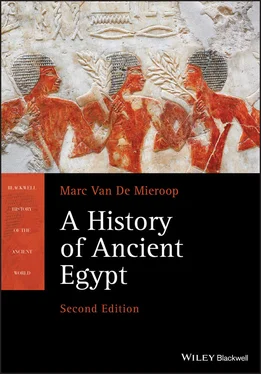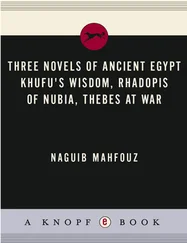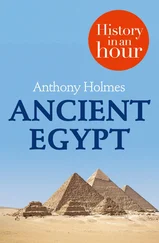269 246
270 247
271 248
272 249
273 250
274 251
275 252
276 253
277 254
278 255
279 256
280 257
281 258
282 259
283 260
284 261
285 262
286 263
287 264
288 265
289 266
290 267
291 268
292 269
293 270
294 271
295 272
296 273
297 274
298 275
299 276
300 277
301 278
302 279
303 280
304 281
305 282
306 283
307 284
308 285
309 286
310 287
311 288
312 289
313 290
314 291
315 292
316 293
317 294
318 295
319 296
320 297
321 298
322 299
323 300
324 301
325 302
326 303
327 304
328 305
329 306
330 307
331 308
332 309
333 310
334 311
335 312
336 313
337 314
338 315
339 316
340 317
341 318
342 319
343 320
344 321
345 322
346 323
347 324
348 325
349 326
350 329
351 330
352 331
353 332
354 333
355 334
356 335
357 336
358 337
359 338
360 339
361 340
362 341
363 342
364 343
365 344
366 345
367 346
368 347
369 348
370 349
371 350
372 351
373 352
374 353
375 354
376 355
377 356
378 357
379 358
380 359
381 360
382 361
383 362
384 363
385 364
386 365
387 366
388 367
389 368
390 369
391 370
392 371
393 372
394 373
395 374
396 375
397 376
398 377
399 378
400 379
401 380
402 381
Blackwell History of the Ancient World
This series provides a new narrative history of the ancient world, from the beginnings of civilization in the ancient Near East and Egypt to the fall of Constantinople. Written by experts in their fields, the books in the series offer authoritative accessible surveys for students and general readers alike.
Published
A History of the Ancient Near East, ca. 3000–323 BC, third edition
Marc Van De Mieroop
A History of the Archaic Greek World, 1200–479 BCE, second edition
Jonathan M. Hall
A History of the Classical Greek World, 478–323 BC, second edition
P. J. Rhodes
A History of the Hellenistic World, 323–30 BC
R. Malcolm Errington
A History of the Later Roman Empire, AD 284–641, second edition
Stephen Mitchell
A History of Byzantium, second edition
Timothy E. Gregory
A History of Greece, 1300 to 30 BC
Victor Parker
A History of Ancient Egypt
SECOND EDITION
Marc Van De Mieroop
Columbia University New York City, USA

This second edition first published 2021
© 2021 John Wiley & Sons Ltd
Edition History John Wiley & Sons Ltd (1e, 2010)
All rights reserved. No part of this publication may be reproduced, stored in a retrieval system, or transmitted, in any form or by any means, electronic, mechanical, photocopying, recording or otherwise, except as permitted by law. Advice on how to obtain permission to reuse material from this title is available at http://www.wiley.com/go/permissions.
The right of Marc Van De Mieroop to be identified as the author of this work has been asserted in accordance with law.
Registered Offices John Wiley & Sons, Inc., 111 River Street, Hoboken, NJ 07030, USA John Wiley & Sons Ltd, The Atrium, Southern Gate, Chichester, West Sussex, PO19 8SQ, UK
Editorial Office 111 River Street, Hoboken, NJ 07030, USA
For details of our global editorial offices, customer services, and more information about Wiley products visit us at www.wiley.com.
Wiley also publishes its books in a variety of electronic formats and by print‐on‐demand. Some content that appears in standard print versions of this book may not be available in other formats.
Limit of Liability/Disclaimer of Warranty While the publisher and authors have used their best efforts in preparing this work, they make no representations or warranties with respect to the accuracy or completeness of the contents of this work and specifically disclaim all warranties, including without limitation any implied warranties of merchantability or fitness for a particular purpose. No warranty may be created or extended by sales representatives, written sales materials or promotional statements for this work. The fact that an organization, website, or product is referred to in this work as a citation and/or potential source of further information does not mean that the publisher and authors endorse the information or services the organization, website, or product may provide or recommendations it may make. This work is sold with the understanding that the publisher is not engaged in rendering professional services. The advice and strategies contained herein may not be suitable for your situation. You should consult with a specialist where appropriate. Further, readers should be aware that websites listed in this work may have changed or disappeared between when this work was written and when it is read. Neither the publisher nor authors shall be liable for any loss of profit or any other commercial damages, including but not limited to special, incidental, consequential, or other damages.
Library of Congress Cataloging‐in‐Publication Data
Names: Van de Mieroop, Marc, author.
Title: A history of ancient Egypt / Marc Van De Mieroop.
Description: Second edition. | Hoboken, NJ : Wiley‐Blackwell, 2021. | Series: Blackwell history of the ancient world | Includes bibliographical references and index.
Identifiers: LCCN 2020029673 (print) | LCCN 2020029674 (ebook) | ISBN 9781119620877 (paperback) | ISBN 9781119620884 (adobe pdf) | ISBN 9781119620891 (epub)
Subjects: LCSH: Egypt–History–To 640 A.D. | Egypt–Civilization–To 332 B.C. | Egypt–Civilization–332 B.C.‐638 A.D.
Classification: LCC DT83 .V36 2021 (print) | LCC DT83 (ebook) | DDC 932–dc23
LC record available at https://lccn.loc.gov/2020029673LC ebook record available at https://lccn.loc.gov/2020029674
Cover Design: Wiley
Cover Image: © Radiokafka/Shutterstock
Figure 1.1Egyptian archetypes. This pair of painted limestone statues, 120 cm high, shows a husband and wife in typical Egyptian fashion. His skin is darker than hers because he works outside, while she, as an upper‐class lady, can stay indoors. She wears a tight‐fitting long dress, while he has only a short skirt. Both of them are represented without wrinkles or other signs of aging and hold their hands in traditional postures. While they are clearly identified by name in the hieroglyphic inscriptions, the images are not to be understood as naturalistic portraits. Source: Scala/Art Resource
Figure 1.2Nubian archetype. On this 10‐cm‐high limestone trial piece for a relief sculpture the 14th‐century artist represented a Nubian with the characteristics that were always used for a man from that region. He has specific physical features, braided hair, and an earring. Such images were produced throughout the ancient history of Egypt, although they started to show a greater variety of types when Egypt became an empire in the mid‐2nd millennium. Metropolitan Museum of Art 22.2.10. Source: Rogers Fund, 1922
Читать дальше













